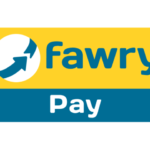aaa in cyber security, stands for Authentication, Authorization, and Accounting, is a three-process framework that ensures secure and controlled access to network resources. This article will explore the aaa cyber security framework, its components, protocols, benefits, and its relationship with Identity and Access Management (IAM). By the end of this guide, you’ll have a deep understanding of AAA security and its importance in protecting valuable assets.

What is aaa in cyber security?
we will explain aaa cyber security definition is a three-process framework (Authentication, Authorization, and Accounting) used to manage user access, enforce policies and privileges, and measure network resource consumption. AAA protocols are typically run on a server that performs these functions automatically, enabling IT management teams to maintain network security and ensure users have the necessary access to perform their roles effectively. AAA security operates in three chronological and dependent steps, where each step must occur before the next one can begin. These steps are:
Authentication
Authentication is the first step in the aaa in cyber security framework and involves verifying a user’s identity before granting them access to the network. The most common method of authentication is through traditional username and password credentials. However, advancements in technology have introduced password less authentication methods and hardware-based authentication, such as biometrics and smart cards.
The Process of Authentication
During the authentication process, the server evaluates the credentials submitted by the user, comparing them to the stored data in the network’s database. Active Directory is a commonly used database for storing and analyzing user credentials in many enterprises.
Authentication methods can vary depending on the organization’s security requirements. Multi-factor authentication (MFA), for example, adds an extra layer of security by requiring users to provide additional credentials beyond a username and password. This could involve using a keycard or biometric data like fingerprints or eye scans.
By implementing strong authentication measures, organizations can ensure that only authorized individuals gain access to their networks, reducing the risk of unauthorized access and potential data breaches.
Authorization
After successful authentication, the authorization process begins. Authorization enforces network policies, granular access control, and user privileges. It determines the specific network resources a user is allowed to access and the tasks they can perform within those resources.
Enforcing Policies and Privileges
aaa in cyber security protocol defines network resources a user has permission to access, such as applications, databases, or online services. It also establishes the tasks and activities users can perform within authorized resources.
Granular access control allows organizations to provide users with access to only the resources necessary for their roles, following the principle of least privilege. For example, a sales representative may have access to the customer relationship management (CRM) software but not the human resources or enterprise resource planning systems. Additionally, within the CRM, they may only be allowed to view and edit data without managing other users.
Accounting
The final process in the aaa in cyber security framework is accounting, which involves measuring and logging data on user sessions within the network. Accounting provides a clear audit trail for compliance and business purposes.
Measuring Network Activity
Accounting collects data on various aspects of user sessions, including session length, session type, and resource usage. This information is valuable for both security and operational evaluations.
Network administrators can analyze user access privileges to specific resources for any changes, ensuring that access is granted or revoked as necessary. They can also use accounting data to make capacity adjustments based on resource usage trends and common activity patterns.
The ability to track and analyze user activity helps organizations assess resource utilization, make informed decisions regarding authorization, and ensure compliance with security standards and frameworks.
The AAA framework in cyber security
The aaa in cyber security model applies to various use cases, including remote access to private corporate networks, using wireless hotspots, and implementing Zero Trust Network Access (ZTNA). By adhering to the aaa framework cyber security, security teams can prevent unauthorized access and gain control and visibility over network and resource access, privileges, and user activity.
AAA framework operates using a client/server model, where the client device seeking access is authenticated by an enforcement point. The user then provides their credentials, such as a username, password, or hardware token. These credentials are compared to the information stored in the database, and if authenticated, the user is granted access to specific data or resources based on predefined configurations or administrator settings. Throughout the user’s session, all operations and activities are recorded for auditing purposes.
Use Cases and Benefits
The AAA framework offers several advantages for enterprises:
By adopting the AAA framework, organizations can enhance their network security, streamline access management processes, and ensure compliance with industry standards and regulations.
AAA Protocols
AAA protocols are integral to the implementation of the aaa in cyber security framework and are used by software providers of network security and access control platforms. The most commonly used aaa cyber security protocols are RADIUS, TACACS+, and Diameter.
RADIUS
Remote Authentication Dial-In User Service (RADIUS) is a client/server model used for remote network access. RADIUS combines authentication and authorization processes, allowing the Network Access Server (NAS) to receive and accept user requests simultaneously.
TACACS+
Terminal Access Controller Access-Control System Plus (TACACS+) also employs a client/server model for remote access but separates the authentication and authorization processes. TACACS+ adds an extra layer of security by requiring a separate key from the client for authorization.
Diameter
Diameter is an evolved version of RADIUS designed to meet modern networking needs. It supports mobile devices, Long-Term Evolution (LTE) networks, and multimedia networks like streaming websites or Voice over Internet Protocol (VoIP) applications.
AAA and IAM
AAA and Identity and Access Management (IAM) solutions are closely intertwined in their objectives of maintaining, enforcing, and tracking access control. IAM refers to the technology and organizational policies that verify a user’s identity, control their access to company resources and data, and log their activity for auditing and compliance purposes.
IAM technology utilizes the AAA framework as a foundation for developing software features that fit within the framework. For example, multi-factor authentication (MFA) is an IAM solution that provides an additional layer of security by requiring additional credentials beyond a username and password.
Privileged Access Management (PAM) tools are another example of IAM solutions that align with the aaa in cyber security model. PAM solutions focus on the authorization component, establishing policies for securing sensitive data by adopting and enforcing the principle of least privilege.
By combining AAA and IAM, organizations can ensure secure and controlled access to their resources while maintaining compliance with regulatory requirements.
How AAA Supports Zero Trust
As organizations adopt the Zero Trust model for cybersecurity, aaa in cyber security protocols can be used to enforce network segmentation, a central principle of Zero Trust. Network segmentation divides an enterprise network into subsections, providing security layers and isolating incidents. AAA processing can be applied to various network segments, requiring authentication and authorization at each point.
Zero Trust also emphasizes the principle of least privilege, where users only have access to the data and applications required for their roles. By deploying aaa in cyber security methods, administrators can exert granular control, enforce the principle of least privilege, and ensure minimal network privileges for each user.
Applying AAA to Complex Infrastructures
StrongDM’s Dynamic Access Management (DAM) platform allows IT and security teams to apply the AAA network service framework to complex infrastructures. By securely storing client credentials and integrating with popular identity management providers, StrongDM enables central oversight of authentication activities.
Enterprises can streamline provisioning workflows, instantly granting or revoking role-based and least-privileged access to users. StrongDM’s just-in-time approval capabilities and granular resource control ensure confident and efficient enforcement of authorization processes.
With a wide range of reporting and auditing features, including session replays, weblogs, and activity tracking, StrongDM provides the data and insights necessary for effective access management. Teams can manage privileges and allocate dedicated resources to applications and data sources that require the highest levels of security.
Adopting AAA with StrongDM
The aaa in cyber security information security framework serves as a model for organizations to manage network access securely. StrongDM offers an all-in-one solution for secure authentication, granular authorization, and thorough accounting of network resources.
By adopting AAA with StrongDM, organizations can enhance their security programs and ensure that only authorized individuals have access to critical resources. To get started, sign up for a 14-day free trial of StrongDM and experience the benefits of aaa in cyber security-based access management.
Conclusion
aaa in cyber security framework plays a vital role in managing user access, enforcing policies, and measuring resource consumption. Authentication, Authorization, and Accounting are the three pillars of AAA security, ensuring secure and controlled access to network resources.
By implementing the AAA framework and leveraging AAA protocols, organizations can enhance network security, enforce granular access control, and maintain compliance with industry standards. Integrating AAA with IAM solutions further strengthens access control and helps organizations maintain a strong security posture.
StrongDM’s Dynamic Access Management platform provides an effective way to apply aaa in cyber security framework to complex infrastructures, ensuring secure authentication, granular authorization, and thorough accounting. By adopting aaa framework in cyber security with StrongDM, organizations can streamline access management and enhance their overall security program.
In the rapidly evolving landscape of cyber security, aaa in cyber security remains a fundamental framework for protecting valuable assets and minimizing the risk of unauthorized access. By embracing aaa framework cyber security principles and leveraging modern solutions like StrongDM, organizations can stay ahead of threats and maintain a robust security posture.
Meta Techs is a leading provider of Authentication solutions that can help organizations protect themselves from social engineering scams. By deploying Meta Techs’s services, organizations can ensure the integrity and security of their email communications.






![Rapid7 Vulnerability Management]](https://meta-techs.net/wp-content/uploads/2025/03/What-is-Rapid7-Vulnerability-Management-1.webp)
